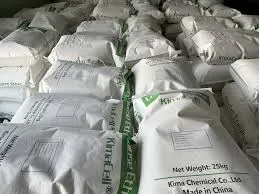
Okt . 09, 2024 18:33 Back to list
Exploring the Performance Characteristics of HPMC Across Various Grades
Understanding the Grades of Hydroxypropyl Methylcellulose (HPMC)
Hydroxypropyl Methylcellulose (HPMC) is a versatile polymer used extensively in various industries, primarily in pharmaceuticals, food, and construction. Its unique properties, such as water solubility, film-forming ability, and thickening capacity, make it a popular choice for numerous applications. However, not all HPMC grades are created equal. Understanding the different grades of HPMC and their specific characteristics is essential for selecting the right type for a given application.
HPMC is derived from natural cellulose through a series of chemical modifications. The differences in chemical composition and the degree of substitution lead to various grades of HPMC. Typically, the primary grades are categorized based on their viscosity, molecular weight, and the ratio of hydroxypropyl to methyl groups. These characteristics influence the performance of HPMC in formulations.
Understanding the Grades of Hydroxypropyl Methylcellulose (HPMC)
The ratio of hydroxypropyl to methyl groups is another vital aspect that differentiates HPMC grades. A higher hydroxypropyl content generally enhances the solubility of the polymer in water, making it especially useful in applications requiring rapid dissolution. Conversely, a higher methyl content can improve the film-forming properties of HPMC, resulting in a stronger and more cohesive film, ideal for coatings and protective barriers in various applications.
grades of hpmc

In the pharmaceutical industry, HPMC is often used as an excipient, where its functional properties, such as binding, thickening, and stabilizing, come into play. Different grades of HPMC are chosen based on the specific formulation needs, whether for oral tablets, capsules, or topical preparations. Its compatibility with various active pharmaceutical ingredients (APIs) also contributes to its widespread use.
In the food industry, HPMC serves as a food additive, providing texture and stability to processed foods. Its emulsifying and thickening properties help improve the mouthfeel and appearance of food products. Different grades are utilized depending on the desired texture and viscosity required for specific food applications.
In construction, HPMC is widely used in cement and masonry products as a water-retaining agent. The grade selected can affect the workability, adhesion, and durability of the final product.
In conclusion, understanding the various grades of HPMC is crucial for maximizing its application potential across different industries. By considering factors such as viscosity, the ratio of hydroxypropyl to methyl groups, and specific functional requirements, manufacturers can optimize their formulations to achieve desired outcomes. Whether in pharmaceuticals, food, or construction, the right grade of HPMC can significantly influence product performance and quality.
-
Unlocking the Benefits of HPMC Products: A Gateway to Versatile Applications
NewsAug.07,2025
-
Tile Bonding Cellulose: The Key to Superior Adhesion and Durability
NewsAug.07,2025
-
Hydroxypropyl Methylcellulose Powder: The Versatile Component in Modern Pharmaceuticals
NewsAug.07,2025
-
Hydroxyethyl Cellulose: The Versatile Solution for Various Industries
NewsAug.07,2025
-
Hydroxyethyl Cellulose (HEC): The Versatile Polymer for Various Applications
NewsAug.07,2025
-
The Ultimate Guide to Mortar Bonding Agent
NewsAug.06,2025







